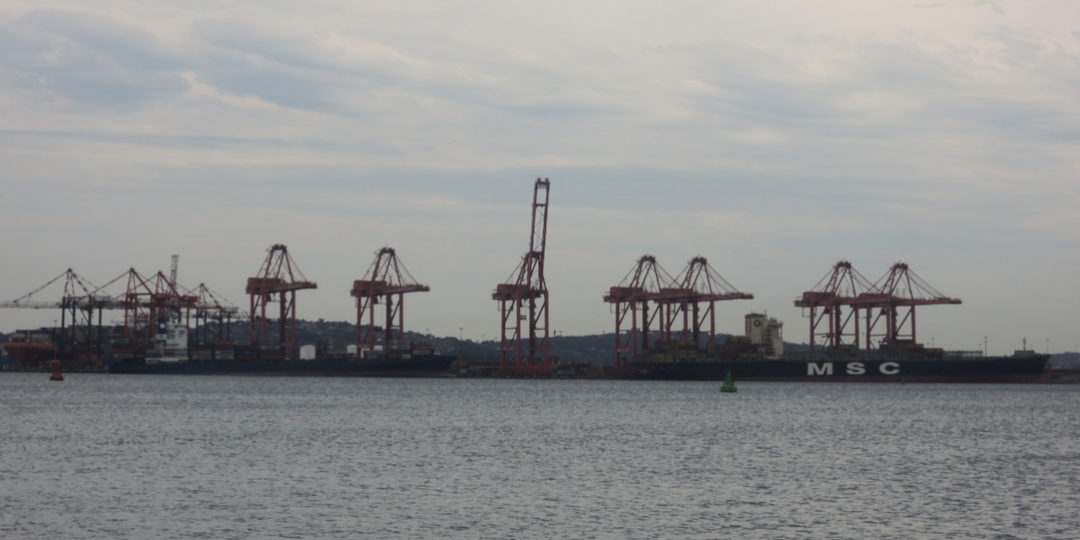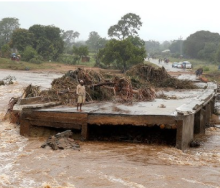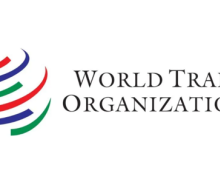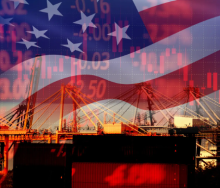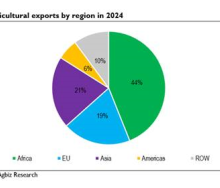The Port of Durban is facing massive backlogs on the land and waterside with more than a dozen vessels queuing outside the port at any given time, and trucks battling to get appointments as equipment failures and inclement weather hampers operations.
However, Transnet’s Durban Terminals managing executive Earle Peters has assured port users that the crisis is receiving management’s attention at the highest level through President Cyril Ramaphosa.
Freight industry stakeholders, who asked to remain anonymous, said berthing delays have run into weeks, while trucks have been struggling to get appointments to load and offload cargo.
They said the port’s management had called an urgent meeting with major shipping lines on Thursday last week and another on Monday night to deal with the crisis that has been ongoing for the past six weeks.
“Berthing delays are running into two weeks,” one port user said.
“Last Thursday there were 14 ships sitting outside. It has not got this bad before. The equipment is breaking down in the stacks and we don’t have equipment to service the trucks so they can’t get appointments.”
He said on Monday there were about 12 container vessels waiting outside for a berth at Durban Container Terminal’s Pier 2, while another three were waiting to berth at Pier 1.
“The port is in a terrible mess.
“There isn’t enough equipment even though they are cannibalising parts from one machine to another. This is resulting in truck congestion, delays inside the terminal up to 10 hours, no booking slots are released as well as vessel berthing delays.”
The source said there’s a real fear that the terminal will soon come to a grinding halt.
Another port user said the backlog had been created due to Transnet not servicing its equipment, which was keeping trucks from entering the port, the “same as Eskom making life difficult for everyone.”
Peters told Freight News that the berthing delays were due to a combination of inclement weather and a shortage of equipment.
“Wind, heavy rains, high swells and a shortage of straddle carriers at the Durban Container Terminal Pier 2 and rubber-tyred-gantry cranes at Pier 1 have resulted in vessels waiting at anchor over the last six weeks,” Peters said.
“The terminals lost 106 hours in September and are currently on 104 hours for October. This is time lost because the terminals could not operate.”
Peters said the same inclement conditions also affected landside traffic.
“Truck congestion meant bookings were not available until the trucks waiting in the terminal were serviced. The terminals have introduced haulers and reach stackers to service road trucks. Landside operations are now fluid,” he said
Peters said the port is working closely with the private sector and container shipping lines on relief initiatives “through the consultative structure” Ramaphosa’s National Logistics Crisis Centre.
“Maintenance resources have been increased as maintenance is now performed over a 24-hour period. Business rules have been developed to service urgent containers and weekly vessel calls.
“The company is also at an advanced stage of concluding long-term OEM (Original Equipment Manufacturer) contracts to modernise its fleet and supply spares.
“The main focus is to improve container handling equipment reliability.”
He said the OEM contracts would also “significantly improve lead times for the supply of spares across its fleet”.
Peters said the port was working on additional initiatives to reduce congestion including the tier-for-tier release to minimise non-productive moves of containers when import containers are collected at the container terminal.
“Containers at DCT Pier 2 are stacked three high and at Pier 1 up to six high.
“Tier-for-tier release will ensure the top container will be dispatched first compared to the container stacked on the ground and therefore the current fleet of equipment will be used in a more efficient manner,” he said.
